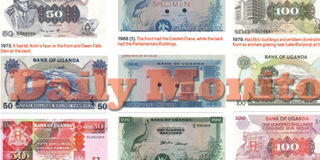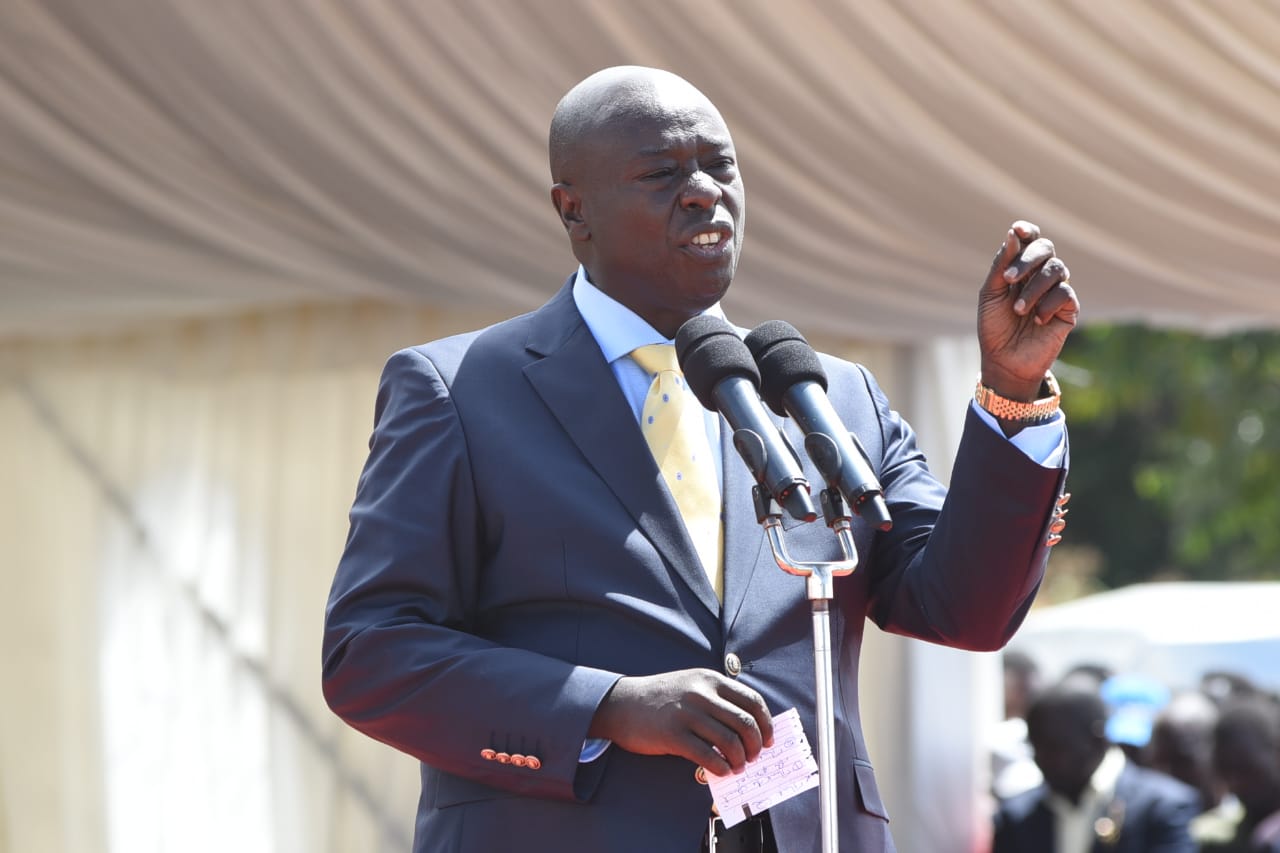Prime
Journey of the Uganda Shilling

Having a legal tender (money) is one of the signs of political independence. Its circulation and value has a number of determinants among them the economic base of the country.
In the case of Uganda, a couple of years before Independence, the East African Shilling, which circulated in the three East African countries being controlled by the East African Currency Board, was the legal tender.
However, after Independence and the failure by the three East African states to agree on the East Africa central bank, each country formed its own central bank and hence the creation of Bank of Uganda by the Bank of Uganda Act, 1966.
As a result in the 1965 Budget speech read by then Finance minister Lawrence Kalule Settala on June 10, announced the creation of the Bank of Uganda.
Following that announcement expatriates from the Bank of England were sought for the job.
Ian Lewis from the Bank of England, together with two other Ugandans; then secretary to the treasury A.J.P.M.Sentongo and then Finance minister were responsible for the setup of Bank of Uganda.
On May 16, 1966, the Parliament of Uganda passed the Act which stated: “An Act to establish the Bank of Uganda which shall issue legal tender currency and maintain external reserves in order to safeguard the international value of that currency [the shilling], promote stability and a sound financial structure conducive to a balanced and sustained rate of growth of the economy and other purposes connected therewith.”
The bank was inaugurated on August 15, 1966, making it the official date for the opening of the Bank of Uganda, with Joseph Mubiru, who had been the managing director Uganda Commercial Bank, as its first governor with Lewis the expatriate from the Bank of England as the first deputy governor.
Currencies
By the time of its creation, the currency in use was the East African Shilling, which had been adopted in 1936.
The currency then was designed by the colonial office.
According to Prof Phares Mutibwa, a professor of history, “the old notes were designed with a touch of history because that’s what the colonial masters wanted then.”
The back face of the different bank notes showed the different economic activities of the country. The most outstanding among these was agriculture.
However, development through agriculture alone was not sustainable unless what has been produced is processed or has had some value addition.
To that effect, commercial agriculture, which had been introduced a couple of decades early became a rallying point to have power introduced in Uganda to process the agricultural produce for economic development.
Hence, with the influence they had in the central bank, their development plan for Uganda, which was centered on agriculture, was reflected on the bank notes.
The trend of having the currency designed with agriculture as the main theme persisted until 1990 when Charles Kikonyogo became the governor of the Central Bank, according to Prof Mutibwa.
“The cultural depiction was introduced by Kikonyogo, changing from the agricultural one which had dominated for a long time.”
Mutibwa adds that the decision of design is not a government decision but purely a Bank of Uganda affair.
The first legal tender to be issued by the Bank of Uganda were issued in July 1966 in the denominations of Shs5, 10, 20, and 100.
The coins were introduced later in 1967 in the denominations of cents 5, 10, 20, and 50. Introduced at the same time were the Shs1 and 2 coins.
The first legal tender was signed by Joseph Mubiru as the governor and J.R.O. Elangot as the secretary.
However, the currency did not stay long. Just two years after the change of government when Amin took power, he dimmed it not fit to retain the old currency. And in 1973, a new currency bearing the portrait of Amin replaced the first bank notes.
However, they also reflected the backbone of the economy - agriculture. Like the previous regime, he did not introduce new denomination either.
This time the new governor who signed these new notes was Semyano Mosese Kiingi, who also introduced the Shs50 note for the first time.
According to Mutibwa’s book The Bank of Uganda 1966-2006 a Historical perspective , he says the decision to change the currency was made by Amin on January 25, 1973, and the new currency notes themselves were introduced to the public on January 26, 1973.
The public was given 15 days within which to exchange their old notes…..” Besides his signature on the new notes was that of J.Geria, the secretary. During this reign at least six people occupied the office of governor.
Other people who served in the office in this era included Onegi-Obel, Henry Kajura, and Charles Kikonyogo.
Just as the political regimes changed so did the currency appearance.
With the fall of Idi Amin in 1979 so did the notes bearing his portrait. With Amin’s departure so did the two months of Kikonyogo end and he was replaced by Gideon Nkojo who served three regimes in a space of one year.
During his time there was a slight change in the bank notes where Amin’s portrait was removed. For the second time Elangot was returning as the bank secretary.
Every regime has always pegged the currency change to the bid to curb inflation.
While meeting the Planning and Economic Development minister under the UNLF government, Nkojo told him that “The major objective in undertaking the currency change was mainly political, and that was unacceptability of retaining Amin’s portrait on the national currency………….
Another motive was to try and demonetise some of the Uganda currency which the fugitives from the liberation war, had taken out with them to neighbouring countries.”
Nkojo’s new currency only removed Amin’s portrait and replaced it with the Bank of Uganda building.
Following the 1980 General Election, a new government came into power. Much as the players were not very much different from the UNLF government players in less than two years, the new government saw it fit to have a new currency in place.
In 1982, the new currency was issued with the same old denominations, however, a year later, a Shs500 and Shs1,000 were introduced with a portrait of President Milton Obote.
Just as the regimes before the Tito Lutwa regime when it came to power in August 1985, did what the previous regime did. They changed the currency and in the new currency notes, Obote’s portrait was removed and replaced with the national emblems.
At the same time, the military junta regime introduced the Shs5,000 bank note. This was signed by the Leo Kibirango as governor with Mr D. Omara Atubo as the secretary.
Come NRM
When the NRA/M took power in early 1986, it did not rush to change the currency until after a year in power.
Just before celebrating its first anniversary in power, the NRM regime appointed Dr Sulaiman Kiggundu as the new governor of the central bank.
The first currency exchange under the current regime took place in May 1987 under the currency reform and exchange programme. Besides cutting the value of the Shilling by 30 per cent, two zeros were cut off the value exchanged.
Under the new exchange exercise, coins of cents 5, Shs1 and 2 was introduced. On top of introducing new bank notes to replace the old ones new denominations were introduced.
In 1995, a new denomination of Shs10,000 was introduced and 11 years later an upgraded version of the same note was introduced.
On December 31, 2000 the Shs5, 10, 20, 50, 100, 200 and 500 bank notes ceased to be legal tender leaving only Shs1,000, Shs5,000 as the main bank notes supplemented with the coins of 50,100,200, and 500 shillings.
In 1999 a green Shs20,000 note was introduced though it was replaced in 2010 with the current version in circulation which is red in colour. In the same year -2010 - new denominations of Shs50, 000, Shs20, 000, Shs10,000, Shs5,000, Shs2,000 and Shs1,000 notes were introduced.
Since the inception of the Uganda Shilling in 1966, the national legal tender has gone through several changes just like on the political scene.
Besides changing with the political tide, along the way, the images on the bank notes, which depicted the backbone of the national economy, are no more.
Once agriculture dominated the economy and agricultural activities dominated the back of all bank notes. However, when agriculture took the down trend, it disappeared from the national currency.




